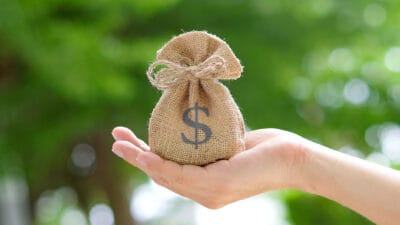ASX shares are the most effective way to build up appealing yearly passive income, in my view. It doesn't need to take a lifetime to build up a large enough portfolio to create a river of dividends.
The great thing about ASX dividend shares is that they can deliver a lot of growth themselves over the years to build towards a goal. Profit growth, compounding and dividend re-investing are all powerful financial forces that can help over the long term.
Lots of people reading this article may already have started building their wealth. But, even if starting from $0, investors have enough time to build up to a goal of $20,000 in income in just 15 years.
Wealth goals
Getting $20,000 of yearly passive income would be a great amount of cash to have rolling into our bank accounts.
ASX shares are known for paying good dividend yields thanks to generous dividend payout ratios and the yield-boosting benefit of franking credits. I believe that assuming a grossed-up dividend yield of 5% is a very reasonable expectation for a portfolio of ASX shares.
Everyone's finances are different, so it's difficult to pick a monthly savings target that would be reasonable for every household's numbers.
The ASX share market has, over the ultra-long term, returned an average of around 10% per annum. While the future is certainly not guaranteed to show a return of 10% per annum, it could be a fair figure to use in a compounding example calculation.
Using the Moneysmart compound calculator, if someone started at $0 and invested $1,050 per month into ASX shares, it would reach $400,000 in 15 years if it achieved average returns of 10% per annum.
Why is $400,000 important? Because with a 5% dividend yield, it would create $20,000 of yearly passive income.
Which ASX shares to buy for passive income?
The easiest investment for an ASX portfolio would be the Vanguard Australian Shares Index ETF (ASX: VAS), which is an exchange-traded fund (ETF) that is invested in 300 of the largest businesses on the ASX.
Investors could also put together a portfolio of S&P/ASX 200 Index (ASX: XJO) shares that are known for paying decent dividends and are likely to grow profit in the coming years thanks to a combination of organic growth and business expansion plans.
Names like Wesfarmers Ltd (ASX: WES), Telstra Group Ltd (ASX: TLS), Coles Group Ltd (ASX: COL), Washington H. Soul Pattinson and Co. Ltd (ASX: SOL), Brickworks Limited (ASX: BKW), APA Group (ASX: APA), Premier Investments Limited (ASX: PMV) and Amcor (ASX: AMC) could all be effective long-term options for dividends and growth.
Whichever way people go, investing in ASX shares can deliver attractive and growing passive income. The possible $20,000 annual dividends in 15 years doesn't mean it's the end of the journey either. Those businesses could keep growing profit and dividends, delivering even stronger cash flow.








